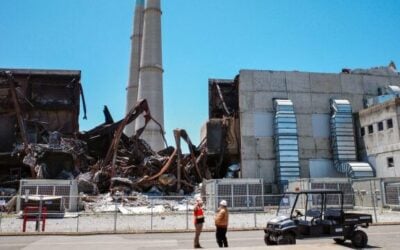Researchers from Technische Universität München (TUM) in Germany working with lithium-ion batteries claim to have observed lithium plating taking place at close quarters while batteries are in use, gaining insights into the phenomenon in the process.
In a lithium-ion battery, energy is charged and discharged by the passing of ions through the electrical force field from the positive electrode (cathode) to the negative electrode (anode). Lithium plating, caused by the interaction between the lithium metal oxide cathode and the anode of a cell, which is commonly made of graphite, results in the build up of metallic lithium on the anode. This can stop the lithium from being available for the normal battery cycle, diminishing the performance of the cell.
Technische Universität München describes lithium plating, which can cause short circuits in extreme cases, as a “known, yet poorly understood phenomenon”, which “stands in the way of the goal” of creating powerful, safe batteries that charge quickly. Metallic lithium is also flammable, posing another hazard.
Before the latest research at the university, which is being conducted as part of ExZellTUM (Exellence Center for Battery Cells), a federal government programme to examine scale production of new battery technologies, TUM claims no scientists had been able to observe lithium plating taking place in a functioning cell. Previously, only when a cell had been taken out of use and cut open had plating been observed, but as TUM pointed out, this method is flawed as it shows “only a snapshot” of the cell as it was when stopped from its cycle.
Try Premium for just $1
- Full premium access for the first month at only $1
- Converts to an annual rate after 30 days unless cancelled
- Cancel anytime during the trial period
Premium Benefits
- Expert industry analysis and interviews
- Digital access to PV Tech Power journal
- Exclusive event discounts
Or get the full Premium subscription right away
Or continue reading this article for free
Technische Universität München’s material research diffractometer STRESS-SPEC is used to examine a lithium-ion cell. Image: A. Heddergott/TUM.
Using neutron beams and putting a battery in the diffracted light, TUM scientists Dr Veronika Zinth and Christian von Lüders were able to deduce how much metallic lithium was formed inside the cell.
The team hopes to understand the phenomenon better and perhaps even to be able to work out how to prevent metallic plating in lithium-ion batteries, starting by observing at which point in the charging and discharging cycle plating actually begins.
So far, the TUM research team has ascertained that the quicker the cycle of charge and discharge, the more plating occurs, with up to around 19% of the lithium in a cell expected to take on the form of plating. The team also found that more metallic lithium is formed at low temperatures, and also discovered that the metallic lithium – or at least some of it – reacts with the graphite in the anode and intercalates within the layers of graphite, in effect causing a slowed down and delayed charging process of its own. This last phenomenon was observed when leaving the battery to rest for 20 hours after a fast-charge cycle.
The team’s findings, “Lithium plating in lithium-ion batteries at sub-ambient temperatures investigated by in situ neutron diffraction” can be purchased here.





